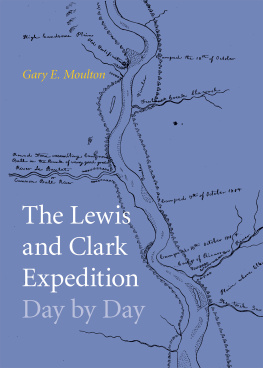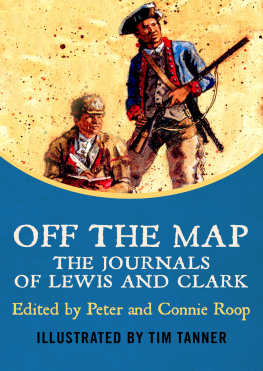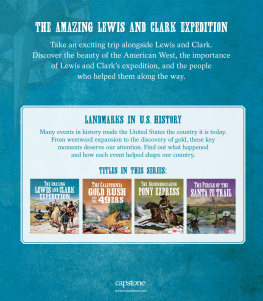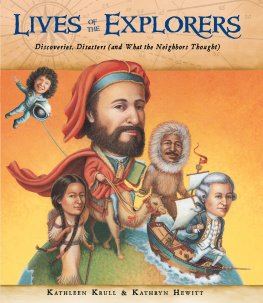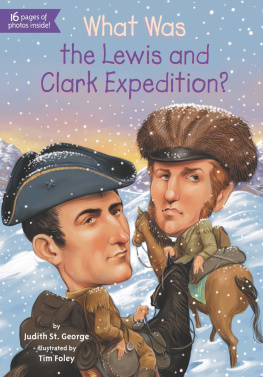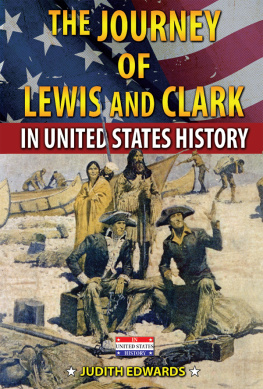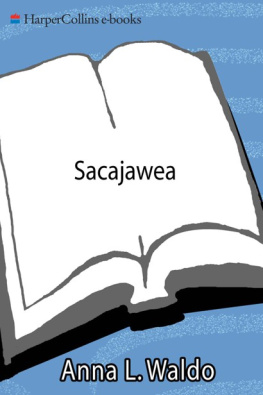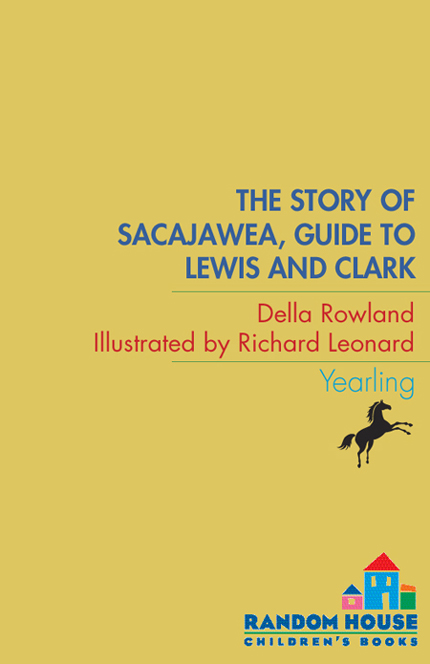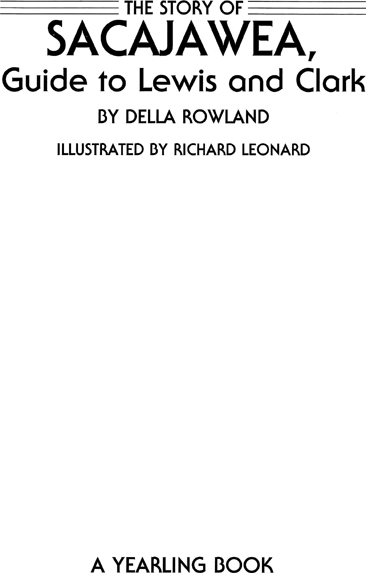ABOUT THIS BOOK
The events described in this book are true. The dialogue has been carefully researched and excerpted from authentic biographies, writings, and commentaries. No part of this biography has been fictionalized.
To learn more about Sacajawea and the Lewis and Clark expedition, ask your librarian to recommend other fine books you might read.
Contents
A NEW LIFE
L ong ago, safely nestled in a valley of the Bitterroot Mountains, in what we now know as the state of Idaho, was a large village of Shoshoni Indians. In this village lived a young girl who would become famous around the world. Today, we know her as Sacajaweaa name that came from a tribe different from her own. Then, when she was still a young girl, she might have been known as Huichu, meaning Little Bird. This was a common name given to Shoshoni girls. According to Shoshoni tradition, she would have had several different names throughout her childhood.
In 1800, Little Bird was celebrating her twelfth summer. Although she didnt know it, her way of life would soon change. The white Americans who lived far to the east were soon to come west. Her life and theirs would become closely bound and, together, they would make an important contribution to American history.
Little Bird was the daughter of an important Shoshoni leader. The Shoshoni were a nomadic tribe; they moved with the change in seasons in order to gather the food they needed to eat. Each spring they traveled west to the Camas Prairie to dig up the delicious roots of the bright blue camas lily. During the summer they returned to the mountain rivers to fish for the salmon that were swimming upstream to lay their eggs. And every fall they crossed the mountains to the eastern plains to hunt among the vast herds of buffalo there.
Long ago, they had learned the seasons of plants and animals and the right time to pick or hunt them. In the rocky forests they could snare rabbits, foxes, and wolves and find the shy deer and elk. They had even learned how to catch the bighorn sheep that leaped along the steep mountainsides. The Shoshoni women knew where to find more than one hundred different plants. Little Birds people were proud that they knew how to live from the gifts of nature. But the Shoshoni hadnt always lived in this way.
The elders told stories around the evening campfires of a different way of life, before their people had horses. That was thousands of years ago, when the Shoshoni Indians had lived in the rough country west of what we now know as the Rocky Mountains. There had been many tribes then, and although their vast land had many lush green valleys full of game, the tribes still needed to roam the mountains and plains to search for food.
With horses they got from Spanish settlements in New Mexico, the Shoshoni began traveling longer distances. Shoshoni nomads could soon be found over thousands of miles, moving from place to place wherever food was available. But smallpox epidemics made them weak, allowing their enemies to take advantage of them. Some of the tribes went into the mountains for safety.
Riding east of the glistening Rocky Mountains across the Great Plains, they depended upon the buffalo for food and other necessities. They liked the taste of the buffalos meat, and they used the hide to make the warm robes that they needed to survive the winters. Long before 1800, they had become skilled hunters, training their horses to cut and turn through the herds, even without a rider on them.
Some Plains Indians felt threatened by the Shoshoni. They wanted to drive the Shoshoni back into the mountains, but the Shoshoni were more powerful because they had horses. Then, other Plains Indians began getting guns from the French fur traders who came down from Canada. Gradually, they obtained horses, too, and began to win battles against camp after camp of Shoshoni. Finally the Shoshoni were forced back into the mountains.
Now Little Birds people came down from the mountains to hunt with great caution. When they were on the plains, they worked quickly. As soon as the men killed the buffalo, the women dried the meat and tanned the skins. When they had all they could carry, they hurried back into the mountains.
Little Birds father always knew when it was time to leave the mountains to hunt for buffalo. This year, as always, his people had dried camas roots and salmon to eat in the cold months ahead. But this food wouldnt last all winter, and the Shoshoni needed warm hides for winter robes. He decided. It was time to move to the buffalo hunting grounds.
Little Birds village was bustling as they prepared for their journey. Even though she was still a child, Little Bird did some of the work of a woman. That morning she helped her mother take down the tepee and bundle up the familys cooking baskets and sleeping robes. Little Bird and her mother laid their belongings on carriers made out of long poles, then tied the carriers to their horses.
Soon they were off, some riding and some walking beside the animals. At what is now known as the Lehmi Pass they crossed through the mountains and sighted their guide mark, the towering Beavers Head Rock. In just a few days they reached the place where three rivers flow into one.
The Indians were excited, but they were nervous, too. They knew that there was always the danger of being attacked by the Minnetaree and Blackfeet Indians, their enemies who lived on the plains. Although the Shoshoni were fierce warriorsthey had bows, arrows, and strong shieldstheir weapons were no match for the guns of the Plains Indians. These tribes made raids on the Shoshoni whenever they found them, carrying off horses and prisoners. Little Birds people had to be careful at all times.
The three rivers on the plains came from cold underground springs. They were so clear that Little Bird could see the pebbles at the bottom when she knelt down to drink the bright water. She had to walk carefully among the prickly pear and rose briars that grew along the banks.
The rivers were dotted with beaver dams and sandbars. Little Bird could hear the loud sound the beavers made as they slapped their tails on the water. She watched the ducks floating on the rivers and pecking at the thick prairie grass. Beyond the prairie she could see the snow-covered tops of the Rocky Mountains. The glistening caps of snow that covered their peaks made these mountains look as if they were shining.
Returning from the riverbank, Little Bird hurried back to camp to help her mother put up the tepee and build a cooking fire. Some of the men had already ridden off to scout for buffalo. The men in the tribe had three jobs. Their main duty, when they were old enough, was to fight off their enemies. Their second job was to hunt and fish. They also took care of the best horses which were used only for fighting and hunting. Little Birds brothers were old enough now to go on the hunt.
Buffalo! Buffalo! The women looked up from the fire as the scouts galloped through the camp crying out that they had found a herd. The men sat down to discuss a plan for the hunt. That night everyone ate dried salmon and thought about the buffalo meat they would have the next day!
Early the next morning the men and older boys rode out to the herd. They killed as many buffalo as they could, leaving the animals where they dropped. The women followed them. As soon as it was safe, they rode out to the dead buffalo and began skinning them.



